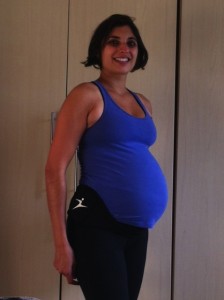It strengthens your core and fixes your body. This is HUGE NEWS. Mums are lifting, bending, rotating, reaching, rocking, pushing and feeding babies. A whole lot of work and strain on the body. The core is made up of the abdominal muscles, the back muscles and the pelvic floor. This cylinder provides the support for the rest of the body to move. After carrying a baby in your womb for 9 months there has been quite a strain on the core. Your abdominals have been stretched and may have stretched apart slightly (diastasis recti). Your pelvic floor muscles have been supporting a heavy load and then may have helped push a baby out. Your lower back muscles will need supporting and strengthening as your baby grows and gets heavier. This is where Pilates has been invaluable for me and it fixes me weekly. Yes there are plenty of other fitness classes you can do postnatally, but a specialised postnatal Pilates is the one you want to do FIRST. It provides you with the foundation that you need to rehabilitate your body after pregnancy and labour. If you do not strengthen your core and get your posture sorted then later along the line you could suffer set backs and problems such as leaking and abdominal separation that doesn’t heal up. If you have this issue come see me for a 1-2-1 session.
If you have pelvic floor issues then you need to be on my pelvic floor workshop.
There are a couple of ways we work on core strength in classes.

Firstly BREATHING. It is something we all do all of the time but breathing using the diaphragm will help the core work in synergy. The Diaphragm, abdominals, back muscles and pelvic floor are all involved in breathing. Try this out:
1. Place your hands around your ribcage. Inhale feeling the breath come into your ribcage. So your ribs move out to the side, your back expands, your chest expands.
2. As you exhale, breath out with pursed lips, feel the tummy come in, the lower back tense and try to get right to the end of your breath to feel an tension in your lower abdominals and a lift in your pelvic floor.
3. Practise this for 5-10 minutes and it really can help, plus it relaxes you 🙂
All the Pilates moves are layered on top of the breathing. It can take a while to get the breathing at the right time and in the right way but suddenly it will click.
It reconnects you with your body. As a mum your primary focus is on your gorgeous baby. There is less time for you to look after your own body and this can get pushed down the list of importance. However your postnatal period is an important time of recovery for you.

A postnatal class can teach you how your body feels when you do certain movements. I know I can be busy rushing around all day and then suddenly in a class I realise my shoulder is out of alignment or my hips ache. It makes you focus on your tummy and pelvic floor, an area many mums don’t want to connect with post-birth. Let’s face it things are changed in or bodies but it is something to embrace and work to strengthen rather than to avoid. A class also means someone else also has a look at how your body is functioning, which can give you valuable insights and reassurance.
I myself go to classes so that someone who knows my body can give me feedback and push me further. We all need someone who knows us well to watch out for us.

So if you are thinking about trying a postnatal class I would highly recommend you try Pilates. Yes I am completely biased, but I am also proof that it works. Having had 3 babies, I have rehabilitated each time with Pilates. It works.








